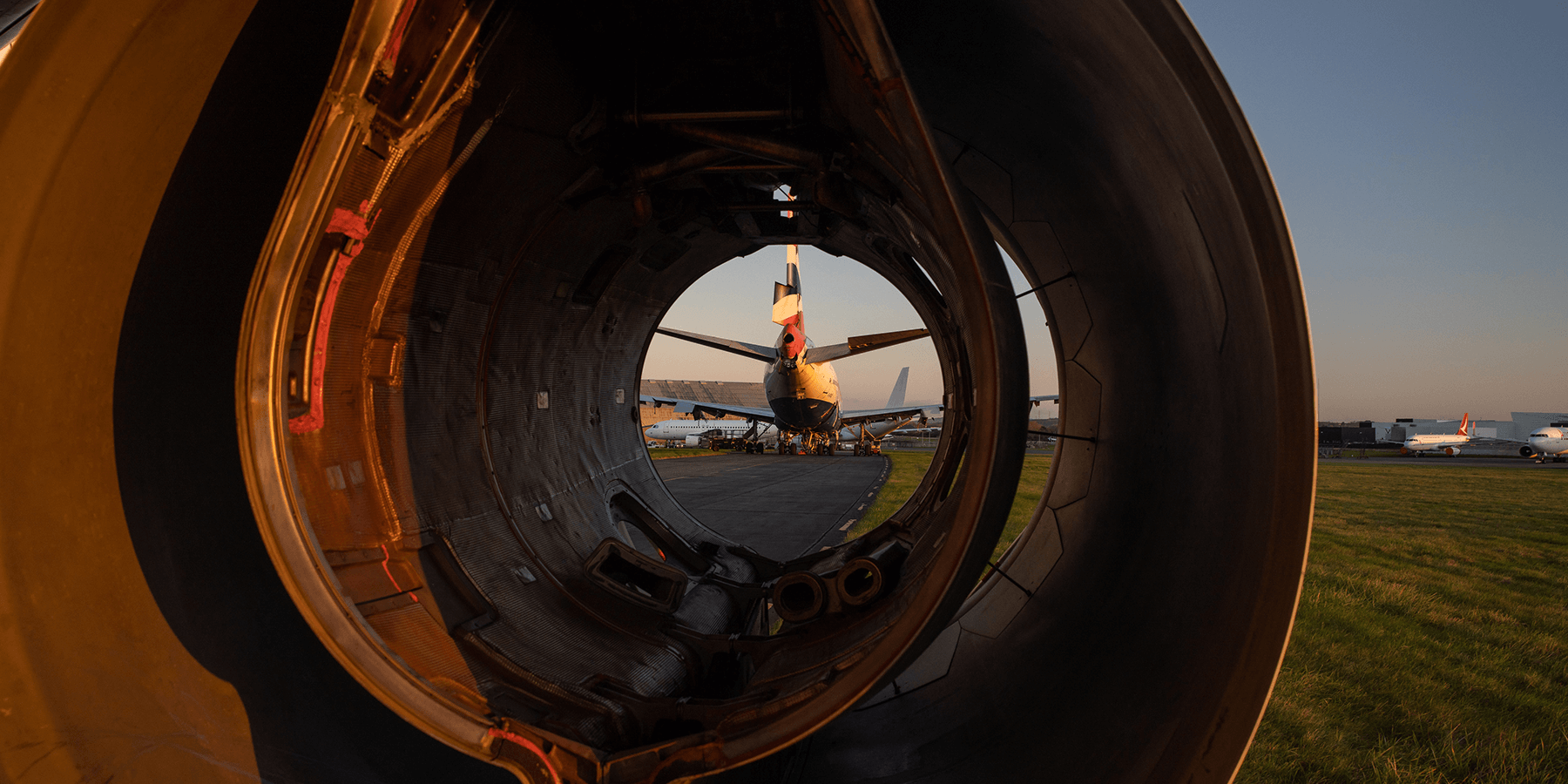17 April 2024
How The Circular Economy Can Bridge The Gap For Parts

How can airlines and lessors keep their aircraft flying for longer? Supply chain issues and other challenges have created a lag in the arrival of new aircraft and parts. Last year, Abdol Moabery (CEO of GA Telesis) was quoting 100 days to turn an engine around, compared to a more usual 60[1].
In 2024, airlines will need to keep their planes flying for longer, or lease in older aircraft to bridge the gap. . Two areas to focus on are used serviceable material and decentralising the parts supply chain.
Reuse spare parts – harvest your own.
Reuters estimates that $35bn[2] is spent annually on components for repairs. The supply chain issues we’re seeing are also increasing demand for other options. Increasingly, they are turning to reused parts, which often cost up to 40% less than new ones[3]. Reusing parts offers a cost-effective and reliable alternative. But if everyone needs to keep their aircraft flying and the bow wave of retirements is being pushed out; where do the spares come from?
One way to solve the challenge of this growing demand is to produce your own. In a fleet of aircraft, the oldest can be surrendered for parts to support the remaining fleet. Airlines and lessors can create parts security with their own repository. Reusing parts is also an opportunity for airlines to boost their green credentials. One part reused is one less that’s had to be made from scratch using hard to come by minerals and resources.
Decentralise supply – to reduce local bottlenecks
When the supply chain seizes up, decentralising can offer alternatives too. Of course, centralisation offers cost savings and process improvement. But, that said, sticking with what you’ve always done is less helpful when there’s a backlog of requests and none of them are being fulfilled.
This is where expanding the list of suppliers can help to ease a bottleneck. It may not offer the same level of centralised savings, but it could relieve the immediate pressure. Decentralising, or having a roster of smaller suppliers, may help to bypass regional blockages. What’s unavailable in the USA may be more easily found in Europe, for example.
This issue came up at last summer’s ISTAT as companies looked for cost savings[4]. There were discussions about, how the rise in demand for Parts Manufacturer Approvals (PMAs) was expected to increase. There was also talk about looking for alternatives to single suppliers to lessen reliance. As 2024 progresses we’re seeing these discussions become action. Across the industry, organisations are discussing whether to wait for a new part, harvest used serviceable material, or convert to PMAs.
Passenger revival – can airlines benefit?
Sustainable parts are one way to keep aircraft flying longer safely, so airlines can respond to passenger demand. In the US domestic market, Cirium[5] notes that passenger numbers ended 2023 ‘4% ahead of the previous peak’ and in the UK although volumes were still down by 2%, ‘revenue growth was robust, ending the year up by 9%’. To profit from this uptick, airlines are going to need to prolong the life of their aircraft until the supply chain stabilises. There’s always the possibility that passenger numbers will drop back, of course, particularly in the West where the economic climate is more uncertain.
Capacity growth is lagging.
Supply is expected to improve, but there are new challenges on the horizon. As the effects of the pandemic begin to fade, the possibility of a Western recession and the impact of war loom. Cirium’s research shows that ‘capacity growth remains modest at around 4% for the year and likely to run a point or two behind demand [in 2024]’. We can see that all the key players are facing challenges that are going to take months, if not years, to resolve.
We need to make a start. This issue is going to need to be faced head on in 2024 as airlines respond to demand for capacity. The part we can play is to promote responsible disassembly of aircraft and ensure as many parts as is possible are re-used in the circular economy. Then it's all about recycling what’s left behind for use outside of aviation.
[1] Focus: Airlines, repair shops in North America rely on used, generic parts to keep aircraft flying | Reuters
[2] Focus: Airlines, repair shops in North America rely on used, generic parts to keep aircraft flying | Reuters
[3] Focus: Airlines, repair shops in North America rely on used, generic parts to keep aircraft flying | Reuters
[4] ISTAT Jetrader - Summer 2023 [20 - 21] (nxtbook.com)
[5] Cirium – What’s next for the industry’s recovery in 2024?